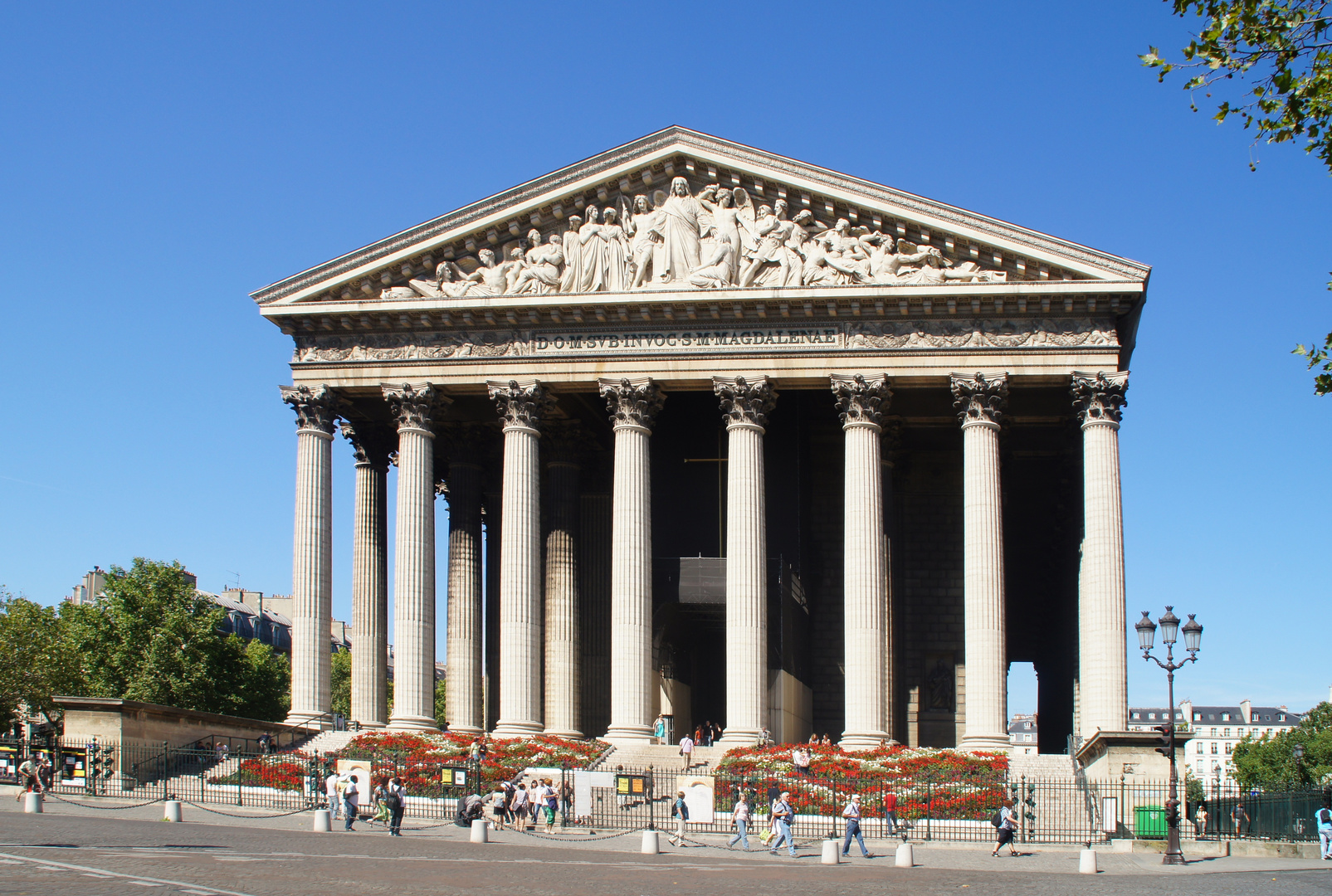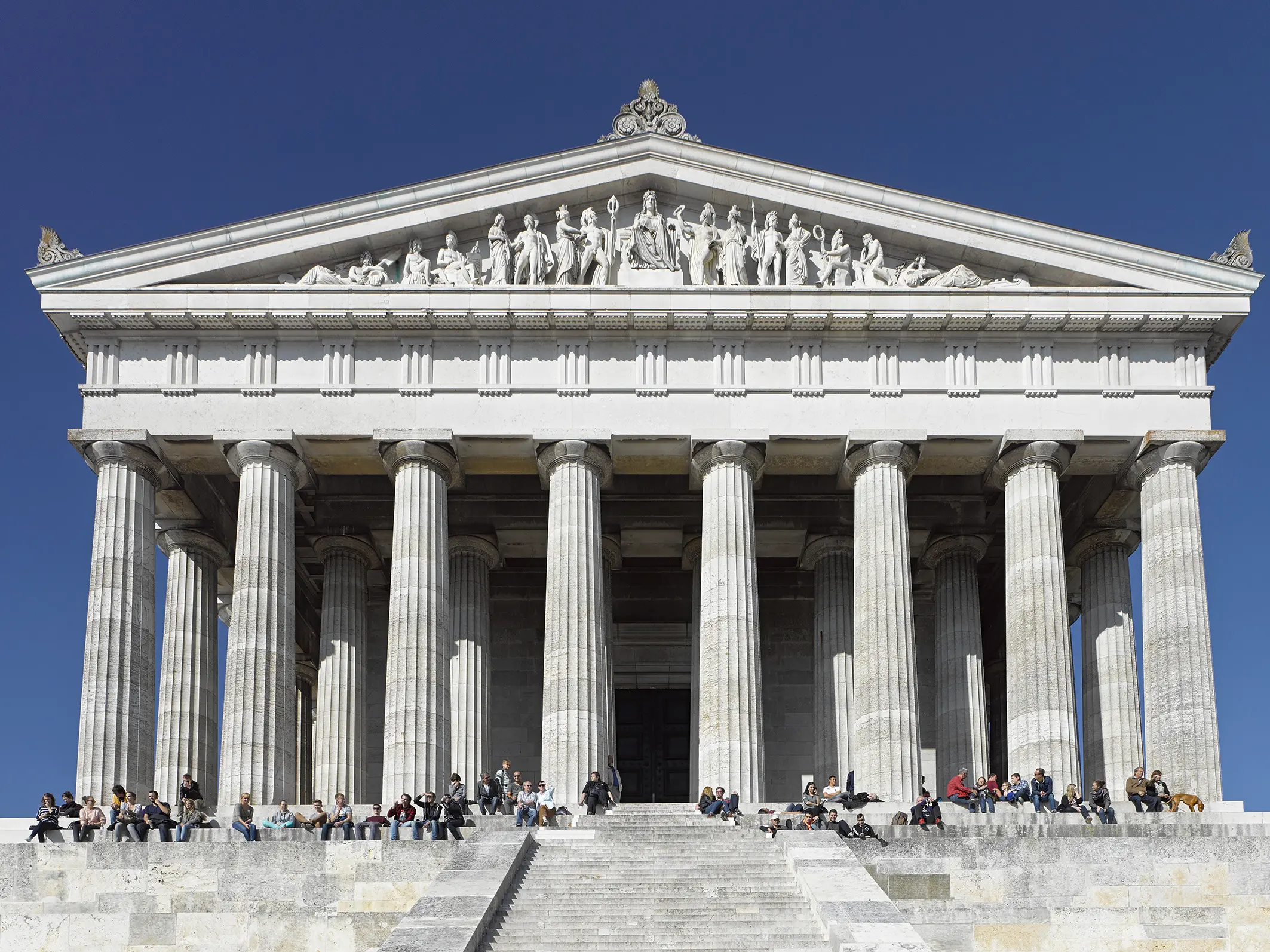My channels - Néo Classique
The Parthenon in Centennial Park, in Nashville, Tennessee, is a full-scale replica of the original Parthenon in Athens. It was designed by architect William Crawford Smith and built in 1897 as part of the Tennessee Centennial Exposition.
Today the Parthenon, which functions as an art museum, stands as the centerpiece of Centennial Park, a large public park just west of downtown Nashville. Alan LeQuire's 1990 re-creation of the Athena Parthenos statue in the naos (the east room of the main hall) is the focus of the Parthenon just as it was in ancient Greece. Since the building is complete and its decorations were polychromed (painted in colors) as close to the presumed original as possible, this replica of the original Parthenon in Athens serves as a monument to what is considered the pinnacle of classical architecture. The plaster replicas of the Parthenon Marbles found in the Treasury Room (the west room of the main hall) are direct casts of the original sculptures which adorned the pediments of the Athenian Parthenon, dating back to 438 BC. The surviving originals are housed in the British Museum in London and at the Acropolis Museum in Athens.
The Royal Exchange in London was founded in the 16th century by the merchant Sir Thomas Gresham on the suggestion of his factor Richard Clough to act as a centre of commerce for the City of London.[1] The site was provided by the City of London Corporation and the Worshipful Company of Mercers, who still jointly own the freehold. It is trapezoidal in shape and is flanked by Cornhill and Threadneedle Street, which converge at Bank junction in the heart of the city. It lies in the ward of Cornhill.
It has twice been destroyed by fire and subsequently rebuilt. The present building was designed by Sir William Tite in the 1840s. The site was notably occupied by the Lloyd's insurance market for nearly 150 years. Today the Royal Exchange contains Fortnum & Mason The Bar & Restaurant, luxury shops, and offices.
Traditionally, the steps of the Royal Exchange are the place where certain royal proclamations (such as the dissolution of parliament) are read out by either a herald or a crier. Following the death or abdication of a monarch and the confirmation of the next monarch's accession to the throne by the Accession Council, the Royal Exchange Building is one of the locations where a herald proclaims the new monarch's reign to the public.

L’église de la Madeleine se situe sur la place de la Madeleine dans le 8e arrondissement de Paris. Elle constitue une parfaite illustration du style architectural néoclassique avec son portique octostyle.
Sa construction s'est étalée sur 85 ans en raison des troubles politiques en France à la fin du XVIIIe siècle et au début du XIXe siècle. Les changements politiques de l'époque en firent modifier à plusieurs reprises la destination et les plans. Conçu par Napoléon Ier comme un temple grec dédié à la gloire de sa Grande Armée en 1806, le bâtiment faillit être transformé en 1837 en gare ferroviaire, la première de Paris, avant de devenir une église en 1845. Sous le fronton, l'inscription en latin « D.O.M. SVB. INVOC. S. M. MAGDALENAE » (« Domino Optimo Maximo sub invocatione Sanctae Mariae Magdalenae ») signifie « Au Dieu très bon et très grand, sous l'invocation de sainte Marie-Madeleine ». L'édifice a une longueur de 108 mètres, une largeur de 43 mètres, une hauteur de 30 mètres et est ceinturé par 52 colonnes corinthiennes.

In der Gedenkstätte Walhalla in Donaustauf im bayerischen Landkreis Regensburg werden – ursprünglich auf Veranlassung des bayerischen Königs Ludwig I. – seit 1842 bedeutende Persönlichkeiten „teutscher Zunge“ mit Marmorbüsten und Gedenktafeln geehrt. Benannt ist sie nach Walhall, der Halle der Gefallenen in der nordischen Mythologie. Der Architekt war Leo von Klenze.
Zur Eröffnung im Jahre 1842 wurden 160 Personen mit 96 Büsten und, in den Fällen fehlender authentischer Abbildungen oder bei Handlungen wie dem Rütlischwur, 64 Gedenktafeln geehrt. Gegenwärtig umfasst die Sammlung 131 Büsten und 65 Gedenktafeln, die an Personen, Taten und Gruppen erinnern. 13 der Geehrten sind Frauen. Seit 1962 werden die ursprünglich 96 Büsten in Abständen von fünf bis sieben Jahren wieder ergänzt. Die Auswahl erfolgt durch den bayerischen Ministerrat auf Empfehlung der Bayerischen Akademie der Wissenschaften.
